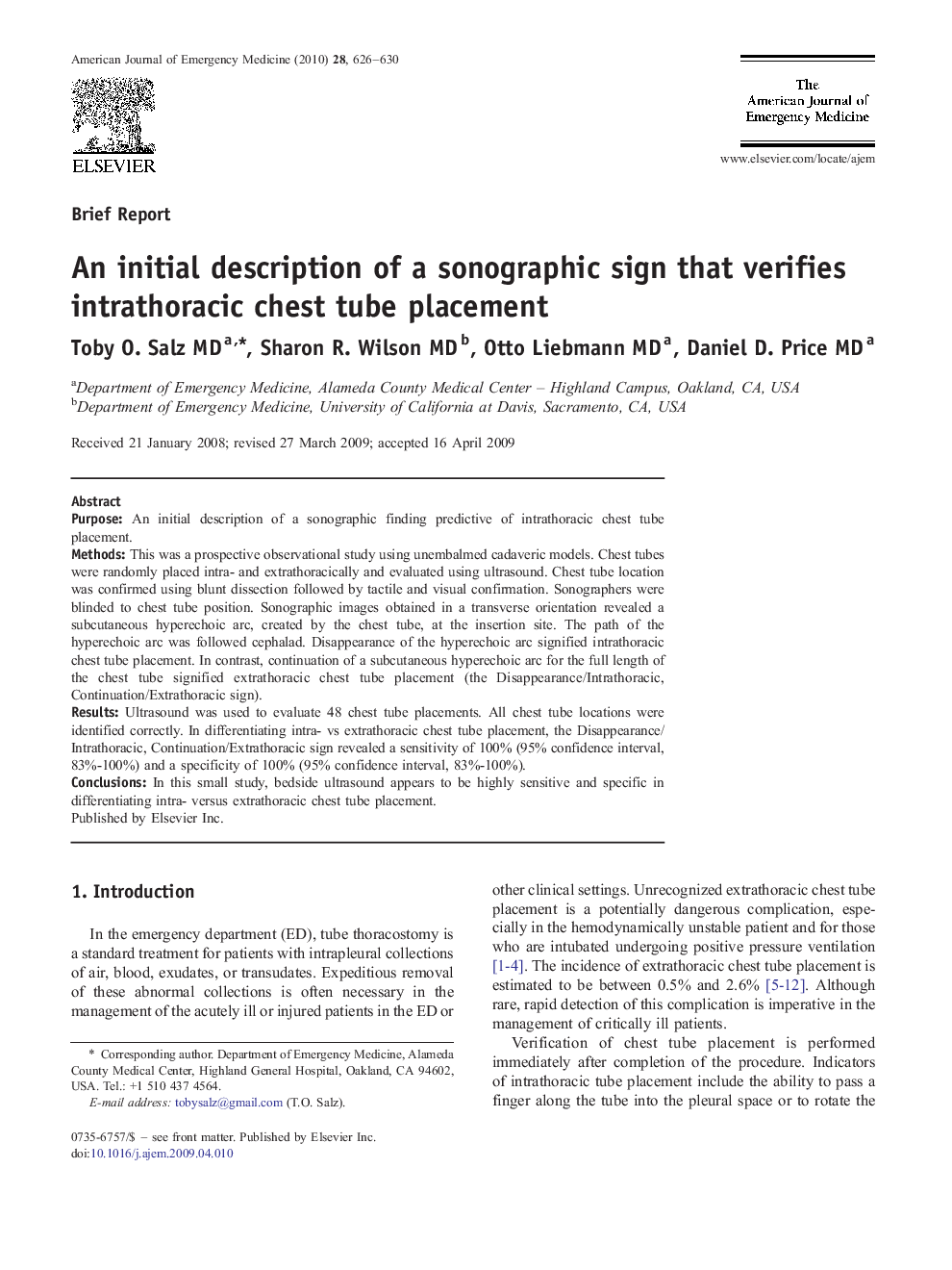| Article ID | Journal | Published Year | Pages | File Type |
|---|---|---|---|---|
| 3226626 | The American Journal of Emergency Medicine | 2010 | 5 Pages |
PurposeAn initial description of a sonographic finding predictive of intrathoracic chest tube placement.MethodsThis was a prospective observational study using unembalmed cadaveric models. Chest tubes were randomly placed intra- and extrathoracically and evaluated using ultrasound. Chest tube location was confirmed using blunt dissection followed by tactile and visual confirmation. Sonographers were blinded to chest tube position. Sonographic images obtained in a transverse orientation revealed a subcutaneous hyperechoic arc, created by the chest tube, at the insertion site. The path of the hyperechoic arc was followed cephalad. Disappearance of the hyperechoic arc signified intrathoracic chest tube placement. In contrast, continuation of a subcutaneous hyperechoic arc for the full length of the chest tube signified extrathoracic chest tube placement (the Disappearance/Intrathoracic, Continuation/Extrathoracic sign).ResultsUltrasound was used to evaluate 48 chest tube placements. All chest tube locations were identified correctly. In differentiating intra- vs extrathoracic chest tube placement, the Disappearance/Intrathoracic, Continuation/Extrathoracic sign revealed a sensitivity of 100% (95% confidence interval, 83%-100%) and a specificity of 100% (95% confidence interval, 83%-100%).ConclusionsIn this small study, bedside ultrasound appears to be highly sensitive and specific in differentiating intra- versus extrathoracic chest tube placement.
